Do you know about the organization CREMA Costa Rica? CREMA stands for Centro de Rescate de Especies Marinas Amenazadas, is a non-profit organization registered in Costa Rica founded in 2010 and its vision is a healthy Eastern Tropical Pacific Ocean, with many species and capable of providing the resources we need from the sea for us and for future generations; they carry out research and conservation projects, to have an impact on the health of the marine ecosystems of Costa Rica and the whole ocean.
Daniel Arauz Naranjo, its current executive director, is a Costa Rican biologist and conservationist. Since he was a child, he has been interested in marine biodiversity: sea turtles, sharks, diving and everything that involves the conservation of our seas. “I did not found CREMA Costa Rica, it was founded by my mother. It is worth noting that my parents have been involved in marine conservation movements since they were very young, so I practically grew up in this environment,” he said.
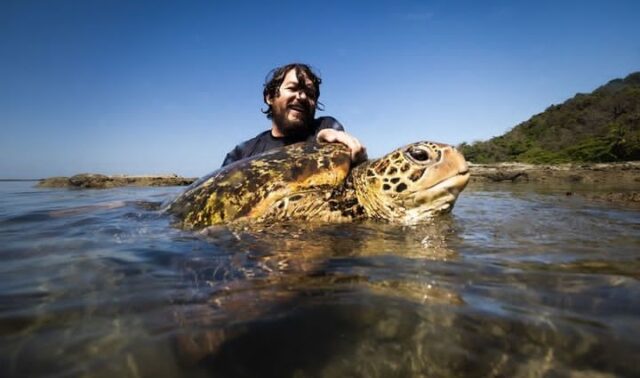
What did Daniel do before joining Crema Costa Rica?
Daniel, during his University career focused on the study of different groups such as birds, bats and marine organisms, with hundreds of explorations in the Pacific of Costa Rica including expeditions to Cocos Island and Baja California in Mexico, in addition to that in 2018, he received the National Geographic Edge Fellowship award given by National Geographic and the Zoological Society of London. In 2022, he entered the Conservation and Leadership Masters program at the University of Cambridge in the United Kingdom, where he conducted research analyzing marine protected areas and climate change in Antarctica as part of an internship with the British Antarctic Survey; as of this year 2024, Daniel serves as executive director of Crema Costa Rica.
Arauz, began working directly with CREMA between 2016 and 2017, in those years he initiated a hawksbill turtle conservation project in Cabo Blanco National Park, which was the project chosen by National Geographic and the Zoological Society of London to receive the award, this project was funded by them and since then, he has worked closely with these organizations.
Where does it work?
CREMA works basically in the field projects that operate in Guanacaste; its field base is located in a small town called San Francisco de Coyote, which has many beaches nearby where numerous sea turtles nest and the rocky reefs of this region are home to several emblematic species such as: hammerhead sharks, bull sharks, hawksbill turtles, olive ridley turtles and giant manta rays, for example,this is where they have developed most of the projects in the southern part of the Nicoya Peninsula.
“Recently we have expanded and are developing projects in conjunction with other organizations in the southern zone, specifically on Caño Island, and also for several years we have had research projects on Cocos Island,” said the Costa Rican biologist.
What activities does Crema Costa Rica carry out?
CREMA also conducts research: they take measurements of the turtles, put tags on them to identify them, then calculate the hatching success of each nest, they call it hatching success, calculate the levels of predation on the beach, measure the temperature, taking into account measures to mitigate climate change and erosion on the beaches, this is one of the most important projects for the organization.
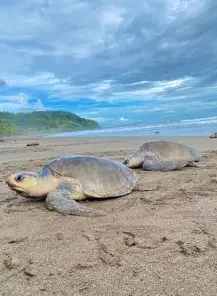
The second focal element is the rocky reefs found along the Pacific coast of the country. These rocky reefs and points found in the Guanacaste area are home to many species such as sea turtles, sharks and manta rays, CREMA’s entire team carries out research activities to determine the movements of these species and thus, to know exactly where they move to in order to create marine protected areas and to be able to influence a little in the management policies that the Government has with respect to marine protected areas and the protection of these species.
The third focal element is the coastal communities, where they work on environmental education projects and also have a solid waste unit that carries out recycling and circular economy projects, in order to have an impact on the amount of waste that reaches our beaches.
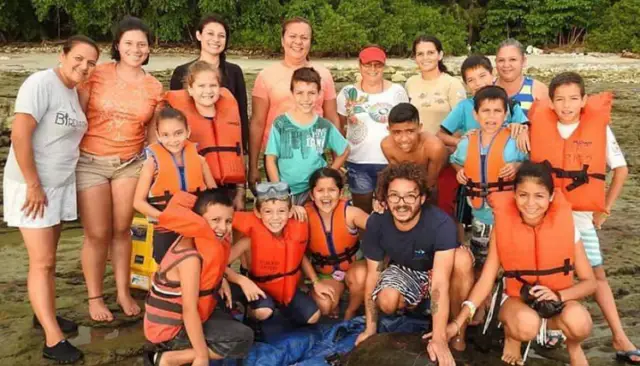
“We want coastal communities to properly manage their waste and thus prevent it from reaching our beaches and having any interaction with endangered species such as sea turtles, finally, our last focal element of conservation are the species of sharks that are endangered, we influence the conservation of sharks through research projects on Cocos Island,where we establish which are the migratory routes of sharks to create marine protected areas and we seek to have a kind of political impact on Costa Rica’s fishing policies that, in recent years, have favored the fishing industry, specifically the longline industry, which has allowed the continued exploitation of the populations of these shark species that are currently in danger of extinction,” emphasized Daniel Arauz.
Who can be part of Crema Costa Rica, as volunteers?
When it comes to receiving volunteers CREMA is a completely open organization, anyone who wants to help them in their cause is welcome; They have research projects in which people can volunteer in the area of Guanacaste, if they have the availability to get to the site and help them, in addition to that, they constantly carry out beach cleaning activities or activities in San Jose in which they require volunteers to flyer or to distribute information, “anyone can help either as national or international volunteers, it is a matter of contacting us either by social networks or by mail and we can gladly share with you how to collaborate in a more active way in the conservation projects that the organization has”.
What kind of research have you carried out in 2024?
This year 2024 has been very profitable in terms of the research that the organization has carried out! said the director of CREMA, who also reported that they are conducting studies of the migratory routes of giant manta rays in Costa Rica, “we are marking the mantas with satellite and acoustic tags, studies that had never been done before in the country and this is giving us more information about what are the migratory routes of these species and at what time they are making these movements, Without a doubt, we can determine the times of the year when the animals are on Caño Island or in Guanacaste, when they go to other countries, this allows us to establish which are the areas that these animals are using to move and which are the areas that we should protect, additionally, it allows us to understand that these animals do not have the same borders as we do, so we should start to work internationally with other countries that also seek to protect the migratory routes of these species”.
On the other hand, they are conducting studies on sea turtle nesting beaches. A few years ago CREMA discovered that Corozalito beach is a new arribadas beach, which are massive turtle nesting events, so they are working with the communities to find out the best way to preserve this beach and that the community can take advantage of this resource such as sea turtle watching through tourists and volunteers.
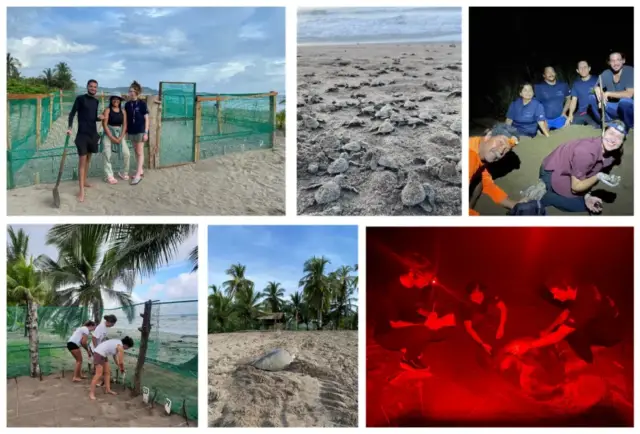
They have been consistent with research on hawksbill turtles and their residence.
Daniel between 2017 and 2018 personally started working with hawksbill turtles in the Cabo Blanco Absolute Natural Reserve, which is the first protected area in Costa Rica, the first National Park that was created in this country, a very historic and important place for marine biodiversity. Being at the tip of the Nicoya Peninsula, there is a flow of currents that make it a really rich place for marine biodiversity, there is a population of hawksbill turtles that “are critically endangered” that come to these waters to take refuge and grow, they are juvenile turtles that stay there until they reach adulthood, before that, CREMA has initiated a project in which they keep a record of the sea turtles that inhabit this area, they also carry out environmental education activities with the schools of the communities of Santa Teresa, “they can go with us to experience what a day in the field is like and get attached to the ocean, besides having a sense of belonging to these sea turtles that spend many years in the waters of Cabo Blanco, a very important place for them”.
In this sense, they are collaborating with a network of researchers called Migramar, they carry out research throughout the Tropical and Eastern Pacific Ocean from Mexico to Chile, and with them they carry out research in Cocos Island, the Galapagos Islands, also islands of Mexico and maintain an exchange of experiences, generating new scientific information on the movement of highly migratory species such as sharks and sea turtles.
Beach cleanups
Beach cleanups have been carried out since CREMA began, “with a solid waste collection unit we have managed to manage more than seven tons of solid waste on the beaches where we work this year, particularly we have done a couple of beach cleanups with the Association of Integral Development of the beaches of Bejuco and plots; we are working with these community organizations to reduce the amount of solid waste and plastic found on our beaches as much as possible”.
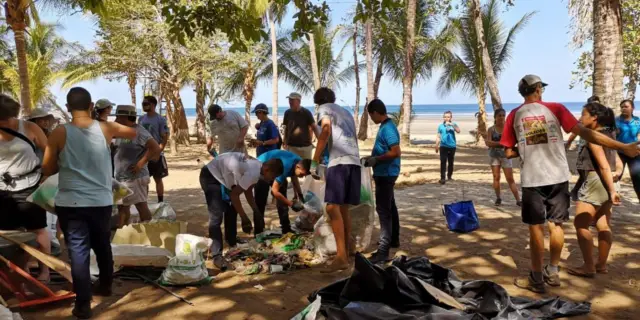
During the turtle season, which is from July to December, when they have volunteers they do beach cleanups practically every month and, out of season, what they try to do is to do a couple of massive beach cleanups.
“This year as I mentioned to you, we already did a couple but we are always looking for more support to be able to do more cleanups, we are promoting the proper management of solid waste in these communities so all the waste we collect from the beach we are looking for it to be managed in the right way either by being recycled or making sure it is not going to go back into rivers and seas, In addition, we are carrying out environmental education and circular economy projects in the communities so that the communities do not have to resort to resources such as burning garbage and other practices that are unsustainable and bad for the environment,” he added.
Do you have figures on illegal fishing or trawling of marine species?
For the Costa Rican biologist, it is very difficult to quantify the illegal fishing that occurs in Costa Rica, mainly because the country does not have the resources to quantify the illegal fishing that occurs, “so the data is practically non-existent, which is one of the issues of the debts that INCOPESCA has had with the Marine Conservation sector in Costa Rica”.
Marine species in danger of extinction in Costa Rica and actions for their preservation.
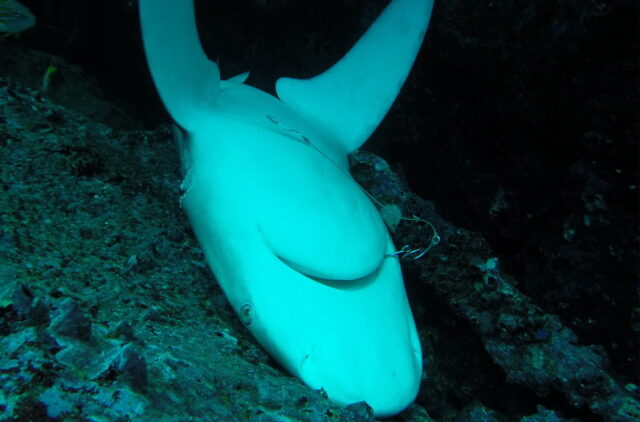
According to Arauz, Costa Rica has several species of marine biodiversity that are in danger of extinction. CREMA focuses on groups such as sharks, manta rays and sea turtles; these are the groups they work with. Their mission is to ensure that these species will recover the population numbers they had before.
“For us it is very important that our science has political incidence and is not left only as research, because research does not save animals, but political changes do, so part of the actions we take is to share our data with the authorities of MINAE and with the authorities of INCOPESCA, We are in charge of making reports of all our research to feed decision making, besides that, we are in charge of being a very active voice in national policy issues, we try to have an impact through contact with congressmen and other political sectors so that our research has a real impact”, he emphasized.
Three marine areas of Costa Rica richer in all kinds of species to investigate visit and enjoy…
Daniel mentioned that, Costa Rica is really a very special country, where there is a great amount of marine biodiversity and incredible spaces where you can enjoy, “as we focus on the Pacific coast, practically in the entire Pacific of Costa Rica, we can say that it is a super special place for all marine species and to be able to go diving in the Bat Islands, We can say that it is a super special place for all marine species and being able to go diving in the Bat Islands, Cabo Blanco, or Caño Island in the south, can really give people a small perspective, a small taste of all that the seas of Costa Rica offer, all the biodiversity they harbor and how important they are for us”.
To change in the country…
Regarding the changes in the environmental area of the country, which the director of CREMA believes should arise, “I have always felt that we need to focus more on the sea, we need to promote that connection that the sea has with all of us citizens and we have to, as an environmentalist country, promote marine conservation with the same force with which conservation on land is promoted, taking real actions and applying strong laws such as the Wildlife Conservation Law, it is urgent to reform institutes such as INCOPESCA, which are institutes of fishermen that control fishing resources, as the saying goes, -it is a fox guarding the henhouse-, and that is one of the main reasons why marine environments in Costa Rica have degraded so much in recent times”.
What does Daniel need to achieve within CREMA and in a personal way?
CREMA is an organization with a very important trajectory, and Daniel finds it very challenging and exciting to lead it. In these times of struggles that are happening in the country, the biologist reflects that they still need to achieve the protection of endangered species, have a greater scope in terms of marine environmental education and the issue of solid waste in Costa Rica, “there are many things we need to do, but I think we are on the right track towards the future.
On deforestation and wetland destruction
Regarding the issue of deforestation and the destruction of wetlands, “it is something that is evidently happening”, Daniel stressed that we are seeing how there are wetlands in the South Caribbean of Costa Rica that are being completely cut down in protected areas and, in the end, “the forests, the seas, the cities, we are all connected, therefore, it is important that the Costa Rican government takes responsibility on the issue of deforestation in protected areas”.
Daniel Arauz, according to what is currently happening with the environmental issue, ended the interview with our team expressing that sometimes it is very overwhelming to understand and comprehend all the problems that our oceans are going through, but there are very important people who are fighting for them not only in Costa Rica but worldwide, there is a wave, a movement of people who are concerned about the seas “and it is important to know that we are not alone and that change is possible if we all get together and demand our governments to comply with the laws”.
We must strive to change cultures and our behaviors in order to generate a positive impact on marine conservation in the country, “anyone who has had a chance to see a sea turtle on our beaches or go to see a whale in the Marino Ballena National Park, knows how impressive and beautiful it is, if we all as a country fight for all this to be maintained, we can enjoy these incredible animals and all the ecosystem services they provide for many generations to come”.

